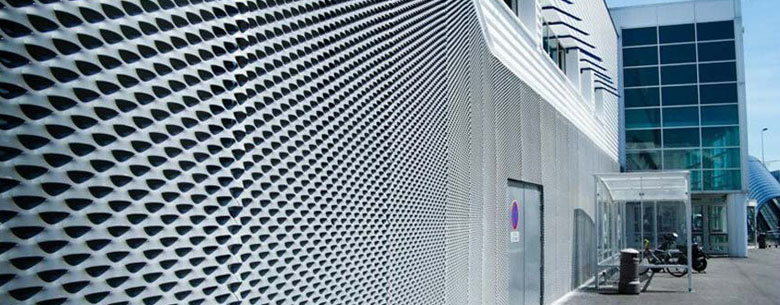The Benefits and Aesthetics of Perforated Metal Panel Railings
In modern architectural design, the fusion of functionality and aesthetics is paramount. One such innovation that exemplifies this balance is the use of perforated metal panel railings. These railings have increasingly become a popular choice in various construction projects, from residential decks to commercial buildings, due to their versatility, durability, and striking appearance.
What Are Perforated Metal Panel Railings?
Perforated metal panels are sheets of metal that have been punctured with a series of holes, resulting in patterns that can range from simple to intricate designs. When used as railings, these panels not only provide safety and support but also contribute to the overall visual character of a space. The holes can be customized in size and arrangement, allowing architects and designers to create unique patterns that enhance the architectural theme.
Aesthetic Appeal
One of the primary advantages of perforated metal panel railings is their aesthetic appeal. The interplay of light and shadow created by the perforations can significantly enhance the ambiance of a space. Daylight filters through the holes, casting dynamic patterns that change throughout the day, adding a sense of movement and life to the environment. Custom designs can also reflect the style of the building or the preferences of the owner, making these railings a canvas for artistic expression.
Moreover, the sleek and modern look of perforated metal tends to complement a variety of architectural styles, from contemporary buildings to industrial-themed designs
. This versatility allows for seamless integration into both new constructions and renovations.Durability and Maintenance
perforated metal panel railing

Metal railings are revered for their robustness, and perforated panels are no exception. Made from materials such as aluminum, stainless steel, or carbon steel, they are highly resistant to corrosion, rust, and severe weather conditions. This durability not only enhances the lifespan of the railings but also reduces long-term maintenance costs.
Additionally, the design of perforated railings allows for effective drainage, minimizing the accumulation of water and debris. This feature simplifies maintenance, as dirt and grime are less likely to build up in hard-to-reach areas. Periodic cleaning and inspections are generally all that is required to keep these railings looking their best.
Safety and Security
In addition to their aesthetic and durability benefits, perforated metal panel railings provide effective safety features. They serve as strong barriers that prevent falls, making them ideal for balconies, staircases, and walkways. The perforations allow for visibility, ensuring that people can see through the railings while still feeling secure. This visual connection is particularly beneficial in public spaces, where safety concerns must be balanced with an open, inviting atmosphere.
Environmental Considerations
As sustainability becomes an increasingly important consideration in construction, perforated metal panel railings offer an eco-friendly option. Metal is a recyclable material, and opting for perforated panels can contribute to greener building practices. Additionally, the longevity and low maintenance requirements of these railings minimize waste and resource expenditure over time.
Conclusion
Perforated metal panel railings present a myriad of benefits that cater to contemporary design needs. Their aesthetic flexibility, exceptional durability, safety features, and environmental advantages make them a top choice for various architectural applications. As more architects and builders recognize the potential of these railings, they are likely to become a staple in modern construction, bridging the gap between safety and sophisticated design. Whether for a chic residential setting or a robust commercial project, perforated metal panel railings are proving to be an indispensable element in today’s architectural landscape.
-
The Best Metal Mesh Solutions: Expanded Aluminum Metal vs. Expanded Stainless Steel Metal
NewsSep.10,2024
-
Round Perforated Sheets vs. Hexagonal Perforated Sheets vs. Embossed Perforated Sheet Metal
NewsSep.10,2024
-
Perforated Metal Sheets
NewsSep.10,2024
-
Experience The Excellence Of Stainless Steel Grating
NewsSep.10,2024
-
Discover the Versatility Of Metal Mesh Expanded Forming Machines
NewsSep.10,2024
-
Discover The Advantages Of Steel Grating For Sale
NewsSep.10,2024
Subscribe now!
Stay up to date with the latest on Fry Steeland industry news.

